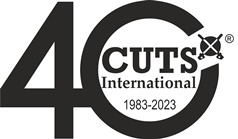The Financial Express, January 16, 2006
By Pradeep S Mehta
While doing a post-mortem of the WTO Hong Kong Ministerial, what must be kept in mind is that the expectations were low and so the outcomes are really modest. Countries like India, Brazil, South Africa, etc., besides protecting their own interests, are also expected to speak for a larger group of Southern countries. And it is often difficult to harmonise the two interests, for the South is not as homogeneous a group as the EU or the OECD.
India and Brazil had to deal with three major issues. First, protect their own interests. Second, protect the interests of LDCs and other developing countries and mediate between North and South. If the roles are so diversified and negotiations so complex, it would be a little unfair to expect our commerce minister, Kamal Nath, and Brazilian chief negotiator, Celso Amorim, to score an ‘A’ in all three. While Nath is being criticised for siding with developed countries on Annex C (Services), Brazi-lians can question Amorim for failing to get EU to agree to 2010 as the end date for eliminating export subsidies.
Annex C of the Hong Kong declaration sets out new approaches and timelines for negotiating services trade liberalisation. The main fear of developing countries is that the new ‘plurilateral’ approach of making requests and offers will ultimately replace the bilateral approach. It also threatens to erode the existing flexibilities of the GATS.
What were India’s demands in Hong Kong? In the run-up to the Ministerial, the government had a series of national consultations on each of the core issues viz., agriculture, non-agricultural market access and services. In agriculture, there was near-unanimity that India should make every effort to protect its farmers, while in services, opinion was in favour of being offensive in negotiations.
On industrial goods, though, there was no clear position in terms of defensive or offensive interests. India had a very clearly defined stand on the key elements of Nama negotiations. In agriculture, India’s main demands were to get ‘special products’ and a ‘special safeguard mechanism’ and also not to undertake any reduction commitments under market access and domestic support.
As per the Declaration, developing countries have the flexibility to self-designate an appropriate number of tariff lines as special products on the grounds of food security, livelihood security and rural development. Besides, they would be allowed to use the special safeguard mechanism to stop imports if found to be harming farmers. As for commitments, India would not be required to make any cuts in de minimis support, as well as any overall cut in trade-distorting domestic support.
- Developing countries can use a special safeguard mechanism to help farmers
- The outcome on cotton, as demanded by LDCs, is quite disappointing
- And the LDCs’ package doesn’t give quota-free market access to all products
Looking at India’s interests, our negotiating team performed fairly well. However, critics are right in saying that the outcome on cotton, a demand of LDCs, is really disappointing. The LDCs’ package is also not very healthy. Their main demand—of duty and quota-free market access for all products— was not conceded to by the developed nations. On product coverage, the accord speaks about market access for at least 97% products. This is an escape clause, which will allow developed countries to continue to protect ‘sensitive products’ that are of export interest to LDCs, such as textiles and clothing, rice, sugar and leather products.
As for Nama, WTO members found it difficult to build consensus either on the ‘linear formula’ or the ‘Swiss formula.’ A consensus has almost emerged that it will be a non-linear Swiss-type formula. The ABI formula, sponsored by Argentina, Brazil and India also proposed a Swiss-type, non-linear formula, with dual coefficients. This is what was agreed in the Hong Kong Declaration. The value of coefficients has been left for future negotiations. We will need to be careful while negotiating coefficients to make sure that we do not have to make tariff cuts larger than the rich. The real gain, particularly for India, came in the sectoral initiative. Second, as demanded by India, the participation would be on a non-mandatory basis.
Given the Ministerial’s modest outcome, our negotiators should not be condemned. On the issue of cotton, duty and quota-free market access for LDCs and other developmental package, the results are not upto the desired level. In these, it is the rich who have to deliver. India and Brazil did try to clinch a favourable deal for LDCs but could succeed only partially.
This article can also be viewed at:
http://www.financialexpress.com/fe_full_story.php?content_id=114596
